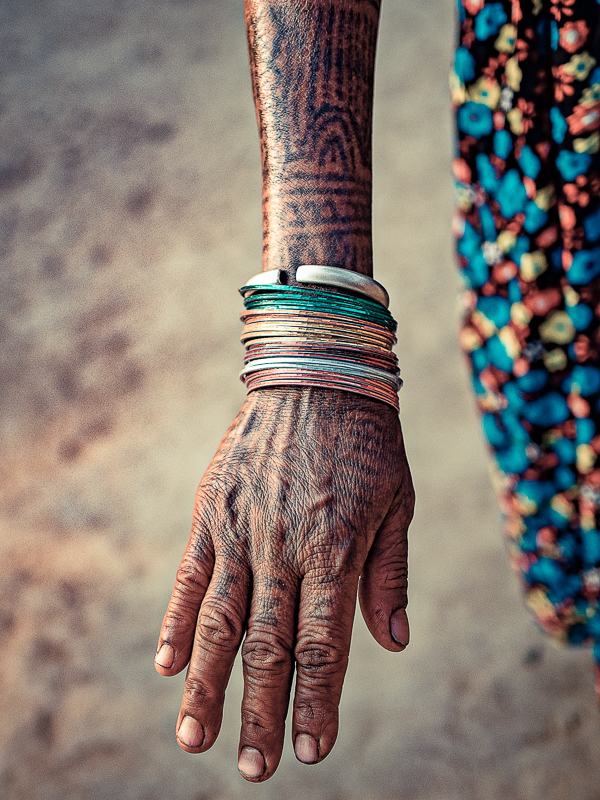
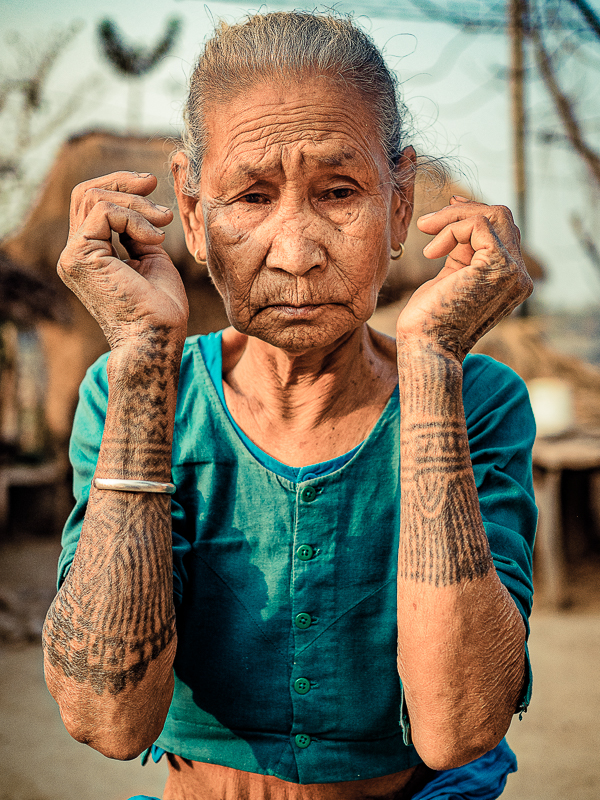


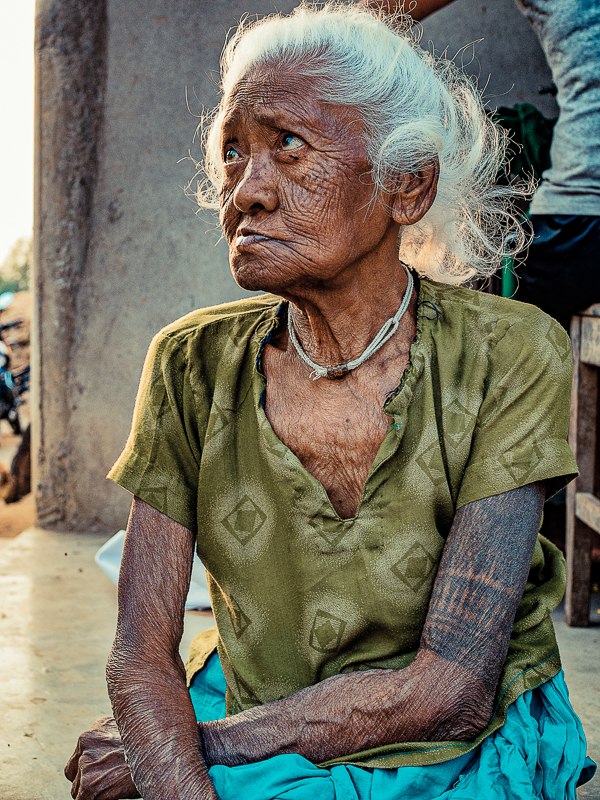



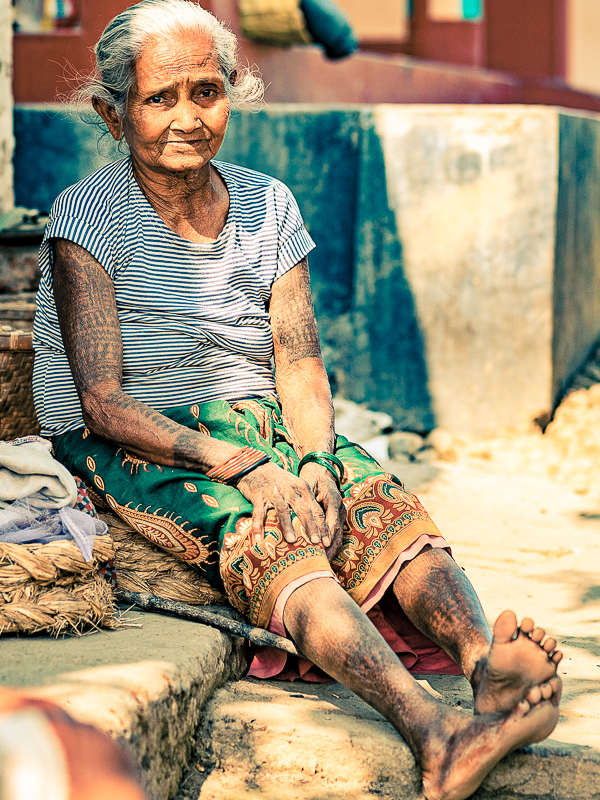
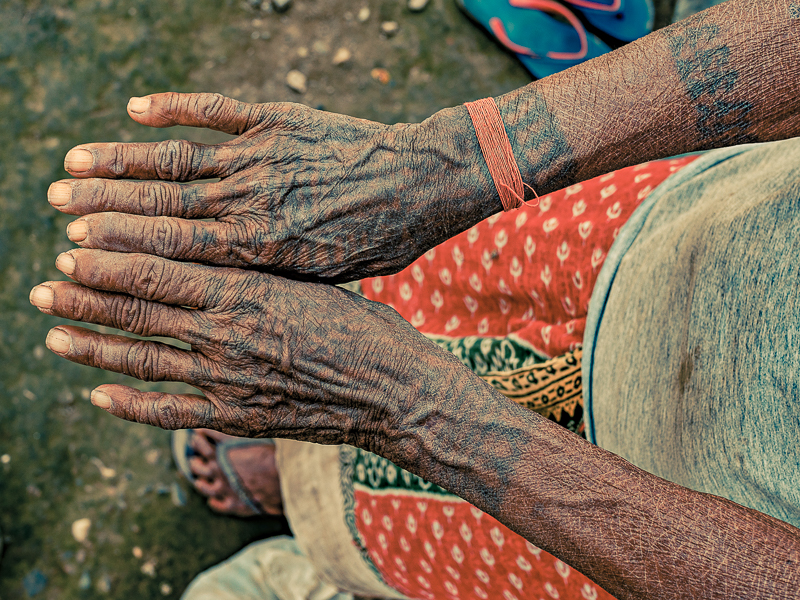










Tattoos are a significant cultural practice in various communities, with individuals using their bodies as a means of expressing their status, beliefs, and personal experiences through art. Among the Tharu tribe in Chitwan, a town in Nepal, I discovered that the tattoos worn by women carry three distinct narratives.

The first shocking revelation comes from the days of the Kingdom of Nepal, where the royal family would spend their summers in Chitwan. It’s said that they would take beautiful girls from the tribe as sex slaves. In order to avoid being abducted, the girls began a trend of getting tattoos to disfigure themselves, making them unattractive to the royal men.
The second shocking story tells of a time when tattooing was a requirement for teenage girls. If a girl refused to get inked, she would be shunned by her family and community, forbidden from talking, marrying, or even having others touch things she had come into contact with. Getting a tattoo became a necessity for acceptance among her people.
Lastly, there is a belief that in the afterlife, a woman will ascend to heaven in her most beautiful form. These stories all point to the significant role that tattoo art played in the lives of the tribe’s women, serving as a means of survival both in life and beyond.





